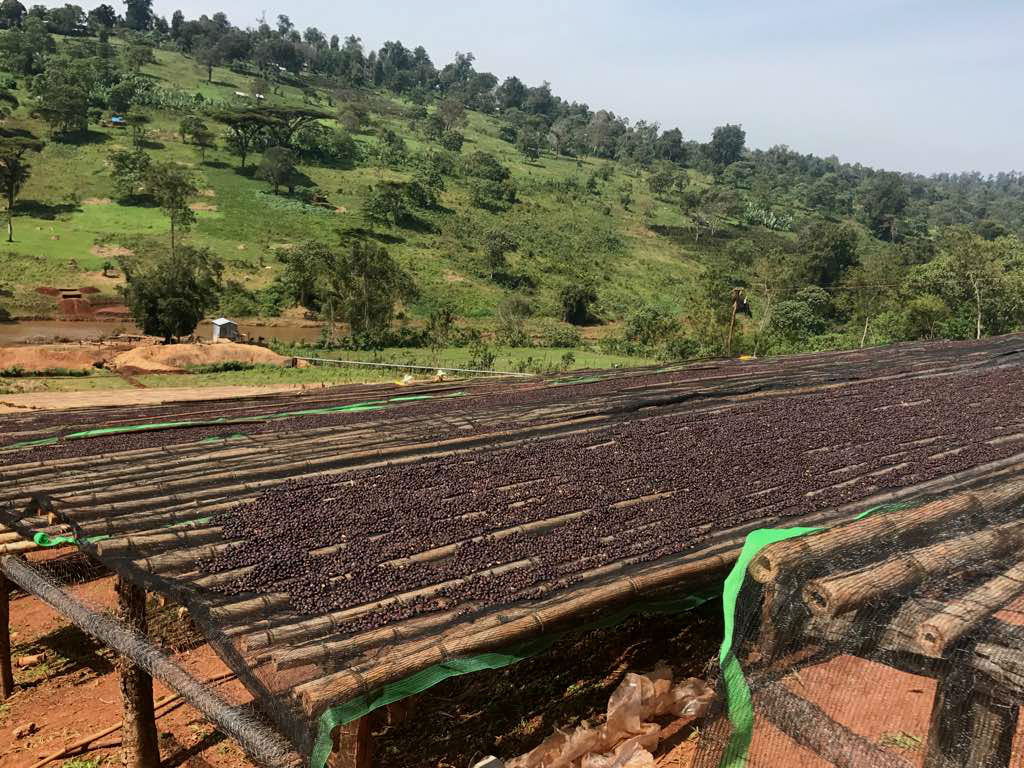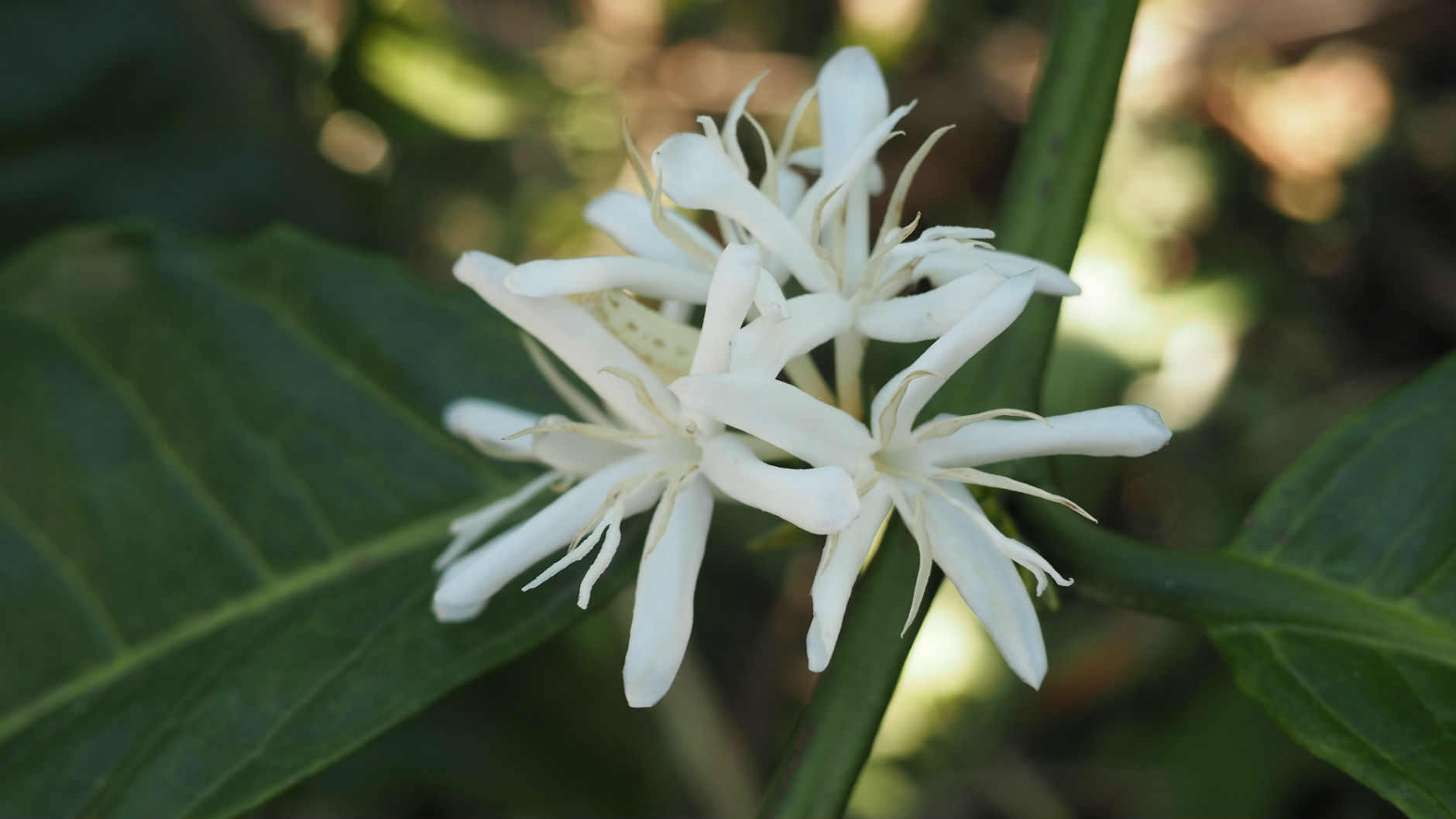Ethiopia Shakiso Kayon Mountain Raised Bed Natural Crown Jewel
Boxes 0
Warehouses Oakland
Out of stock
intro
We really just couldn’t help ourselves this year when it came to these Kayon Mountain coffees. While we just sold out of the immaculate CJ1226, this companion lot is just as delightful, flush with ripe grape and plum notes. Juicy and clean, this is an elegant natural coffee with no shortage of sweetness, and a resonant jasmine flavor presented with uncommon clarity.
To say that recent history in Ethiopia has seen significant changes to the social and political structure of the country would be an understatement. We’ve seen numerous regional uprisings, the election of Africa’s youngest political leader, opening diplomatic dialogue with Eritrea, and a major overhaul in the way the country’s commodities exchange handles exports and direct trade – and that’s just in the last calendar year!
Kayon Mountain Coffee Farm is itself a relatively new establishment in the Guji region, near the border with Gedeb, in the vast Oromia state. Established by local families who call the town of Shakiso their home, the shareholders are no strangers to the coffee trade, having engaged in the coffee auctions for over thirty years. Kayon Mountain was founded in 2012, and has been venturing into direct exports for three years now. Managed by Ismael Hassen Aredo, the establishment employs 25 full time workers and up to 300 people for seasonal help during the peak of harvest. The farm is about 500 hectares in size – quite large – and is about 50% planted with coffee, the rest being a mix of cabbage, indigenous shade trees, and natural forest.
All three of the natural process Kayon Mountain coffees we purchased this season arrived in exceptional condition. While farmers across the globe still practice this method of letting the coffee fruit dry like raisins around the seed, it all started in Ethiopia. It’s still common to see smallholder farmers drying their daily harvest on their porches or lawns across the country. Unlike much of the rest of the world, many of these farmers will then roast and grind their own harvest – Ethiopia is the world’s only major coffee producing country whose volume of consumption equals its export.
green
Very predictable figures here for a classically prepared Ethiopian coffee. It’s a little on the dry side, and has a steady water activity. It’s also relatively high in density while being fairly small in screen size; about 75% falling evenly distributed between screens 14-16.
Ethiopia’s genetic diversity of coffee is no secret, but increased attention is being paid to distinguishing cultivars and varieties, thanks in part to the work undertaken by Tim Hill and Getu Bekele. Established in the 1960s, the Jimma Agricultural Research Center was instrumental in selecting, breeding, and distributing scores of cultivars throughout the country in the decades following Haile Selassie’s downfall. These have included region-specific varieties, specialty cultivars, and hybrids and wild selections made for disease resistance.
taste
ikawa
Using the newer open setting on our Ikawa Pro v. 2, I’ve been working to adjust our older profiles to make them compatible with the higher fan speed in the recent firmware update. This week, I looked at Jen’s tried and true profile for a slightly extended Maillard reaction, adding 3 degrees of heat and reducing the airflow for the last 60 seconds or so.
This natural Guji from Kayon Mountain hit first crack with about 50 seconds to develop after, yielding a lightly caramelized cup that showcased the brighter side of this elegant coffee’s flavor profile. Most cuppers noted jasmine florals and tea-like characteristics with abundant clean fruit notes like plum, lychee, and boysenberry.
This coffee seems prepared to drop with minimal browning, if you’re so inclined, though a little extra PCD should elevate the ripe fruit notes and syrupy characteristics. If the latter is your goal, I’d try lengthening time first, without adding too much additional heat, as this low moisture selection might be prone to run away from you a bit with too much thermal energy late in the roast.
View the profile on your mobile device, and download it to your Ikawa library here: 5:30 415 v copy
quest m3s
With the addition of a ET probe that I can log with Artisan, I feel like I’ve really hit my stride with the Quest this week. The added confidence I get from seeing temperatures tracking in real time really helps. This week, I started all my roasts at a 390F charge temperature with the back closed to allow some airflow from the beginning of the roast. I kept all my roasts at 9A throughout the roast cycle and used the fan to modulate temperatures.
I wanted to bring out the deep fruitiness in this coffee and develop the sugars well, without diminishing the clean acidity.
For this roast in particular, I applied a low fan speed of 3 fairly early in the roast: 2:15/235F. As the roast chugged along, it was apparent that there was plenty of velocity and I increased fan speed to 5 slightly later than usual at 6:30/350F. With slow and even development throughout the Maillard phase, I ended up with nearly equal drying and Maillard times. Crack occurred at 8:23/384F, and with my rate of rise staying steady (a little too steady for my taste), I increased the fan to full immediately at crack.
Crack was strong and steady, and I dropped the coffee after 1:21 development time. There was a ton of chaff with this coffee, so make sure to clean the back of the roaster thoroughly. If you use the back of the roaster for cooling, I recommend scooping out at least a little of the chaff before putting the cooling tray in place. There was certainly enough to restrict airflow.
On the cupping table, this coffee performed well – just as expected. Plenty of fruits came out, as well as a nice tealike flavor. Amongst the cuppers, I’m pretty sure we covered just about every type of grape – green, concord, and grape jelly. If you’re a fan of the fruity, this coffee is for you!
brew
I love brewing freshly arrived Ethiopian coffee on the Hario V60. There’s something comforting about sipping the results of a well executed V60. It’s possible that this has something to do with my own level of comfort regarding this brew device; I feel like I know where I stand with a V60 recipe. If adjustments need to be made, I usually know how best to proceed.
This gorgeous natural from Kayon Mountain Farm requires more careful brewing than some of the other Ethiopian coffees I’ve been brewing of late, but getting the right dial will be well rewarded with incredible complexity and sweetness. The first brew, a 1:16 ratio which led to 1.43% TDS tasted of chocolate, apple cake, maple syrup, and molasses. It was incredibly sweet, but the cooling aspect of the rosemary made me think it might open up with slightly lower extraction.
Coarsening the EK up to grind size 9, began brewing again. On a whim, I also raised the ratio to 1:17; this would help bring down the TDS and might bring out some lighter, fruity flavors. My instincts paid off: this brew was packed full of delicate jasmine tea, blueberry syrup, dried fruit, almonds, and sweetened condensed milk. Kayon Mountain is producing some stellar coffees this year, and this raised bed natural is no exception.







